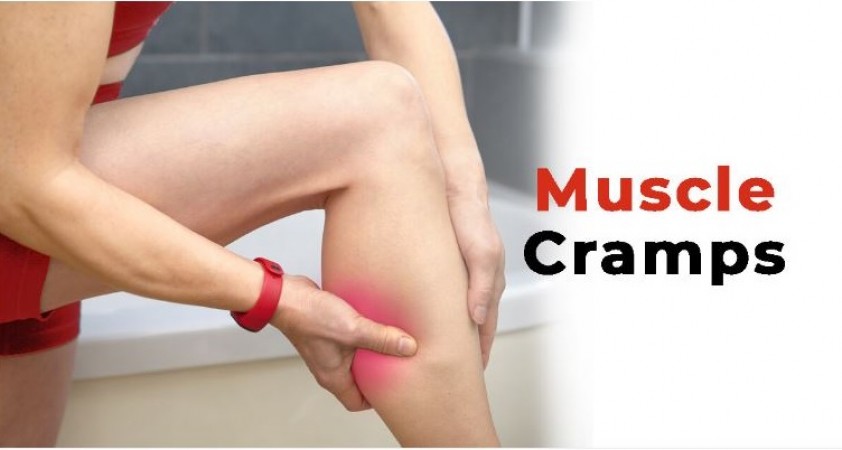
Muscle cramps are sudden, involuntary contractions or spasms in one or more muscles. They can be intensely painful and occur due to various reasons, often disrupting daily activities. Understanding the causes, treatments, and preventive measures can help manage and reduce the occurrence of muscle cramps.
Causes of Muscle Cramps
Dehydration: Insufficient fluid intake can lead to electrolyte imbalances, causing muscles to contract involuntarily.
Overuse or Strain: Muscles can cramp due to overexertion, fatigue, or prolonged periods of physical activity.
Mineral Imbalance: Deficiencies in minerals like potassium, magnesium, calcium, or sodium may trigger cramps.
Poor Blood Circulation: Restricted blood flow to muscles, often due to sitting or standing for long periods, can induce cramps.
Certain Medications: Some medications may contribute to muscle cramping as a side effect.
Treatment for Muscle Cramps
Stretching and Massage: Gentle stretching and massaging the affected muscle can help relieve cramps.
Heat or Cold Application: Applying a heating pad or taking a warm bath can relax muscles, while cold packs can reduce inflammation and pain.
Hydration: Ensuring adequate fluid intake, particularly water and electrolytes, helps prevent dehydration-induced cramps.
Medication: In severe cases, over-the-counter pain relievers or muscle relaxants may provide relief.
Dietary Considerations
Electrolyte-Rich Foods: Consuming potassium (bananas, oranges), magnesium (spinach, almonds), and calcium (dairy, leafy greens) can help prevent mineral deficiencies.
Hydration: Regularly drinking water and electrolyte-rich beverages can maintain proper hydration levels.
Balanced Diet: Eating a well-rounded diet with adequate nutrients supports overall muscle health.
Preventive Measures
Proper Warm-Up: Always warm up before exercising or engaging in physical activity to prepare muscles.
Regular Stretching: Incorporate stretching exercises into your routine to keep muscles flexible and reduce the risk of cramping.
Avoid Overexertion: Pace yourself during physical activities, gradually increasing intensity to avoid muscle fatigue.
Good Posture: Maintain proper posture while sitting, standing, or working to prevent muscle strain and improve circulation.
Additional Factors for Muscle Cramps
Age: Older adults are more prone to muscle cramps due to decreased muscle mass and changes in electrolyte balance.
Pregnancy: Hormonal changes and increased strain on muscles can lead to cramps in pregnant individuals.
While muscle cramps can be distressing, they are often manageable through various preventive measures, dietary adjustments, and simple treatments. However, persistent or severe cramps should prompt a consultation with a healthcare professional to rule out underlying health conditions.
Always listen to your body, stay hydrated, maintain a balanced diet, and incorporate regular exercise and stretching routines to minimize the occurrence of muscle cramps and ensure overall muscle health.
Here are some more exercises and stretches that may help prevent muscle cramps and improve muscle flexibility and strength:
1. Stretching Exercises
Calf Stretch: Stand facing a wall, place your hands against it, and step one foot back, keeping it straight. Bend the front knee and lean forward, feeling the stretch in the calf of the back leg. Hold for 20-30 seconds and switch sides.
Hamstring Stretch: Sit on the floor with one leg straight and the other leg bent. Lean forward from your hips, reaching for your toes on the straight leg. Hold for 20-30 seconds and switch legs.
Quadriceps Stretch: While standing, grab one ankle and pull it towards your buttocks. Keep your knees together and hold for 20-30 seconds. Repeat on the other side.
Hip Flexor Stretch: Kneel on one knee, keeping the other foot flat on the floor in front of you. Lean forward, pressing your hips toward the floor until you feel a stretch in the front of your hip. Hold for
20-30 seconds and switch sides.
2. Strengthening Exercises
Calf Raises: Stand with feet shoulder-width apart, rise onto your toes, then slowly lower back down. Repeat 10-15 times.
Squats: Stand with feet shoulder-width apart, bend your knees and lower your hips as if you were sitting back into a chair. Keep your back straight and chest up. Repeat 10-15 times.
Lunges: Step forward with one foot and lower your body until both knees are bent at a 90-degree angle. Push back up to the starting position. Repeat on both sides 10-15 times.
3. Yoga and Pilates
Downward-Facing Dog: From a push-up position, lift your hips up and back, forming an inverted V shape. Hold for 30 seconds to 1 minute, stretching your calves and hamstrings.
Pilates Leg Circles: Lie on your back and lift one leg straight up. Rotate your leg in small circles, both clockwise and counterclockwise. Switch legs and repeat.